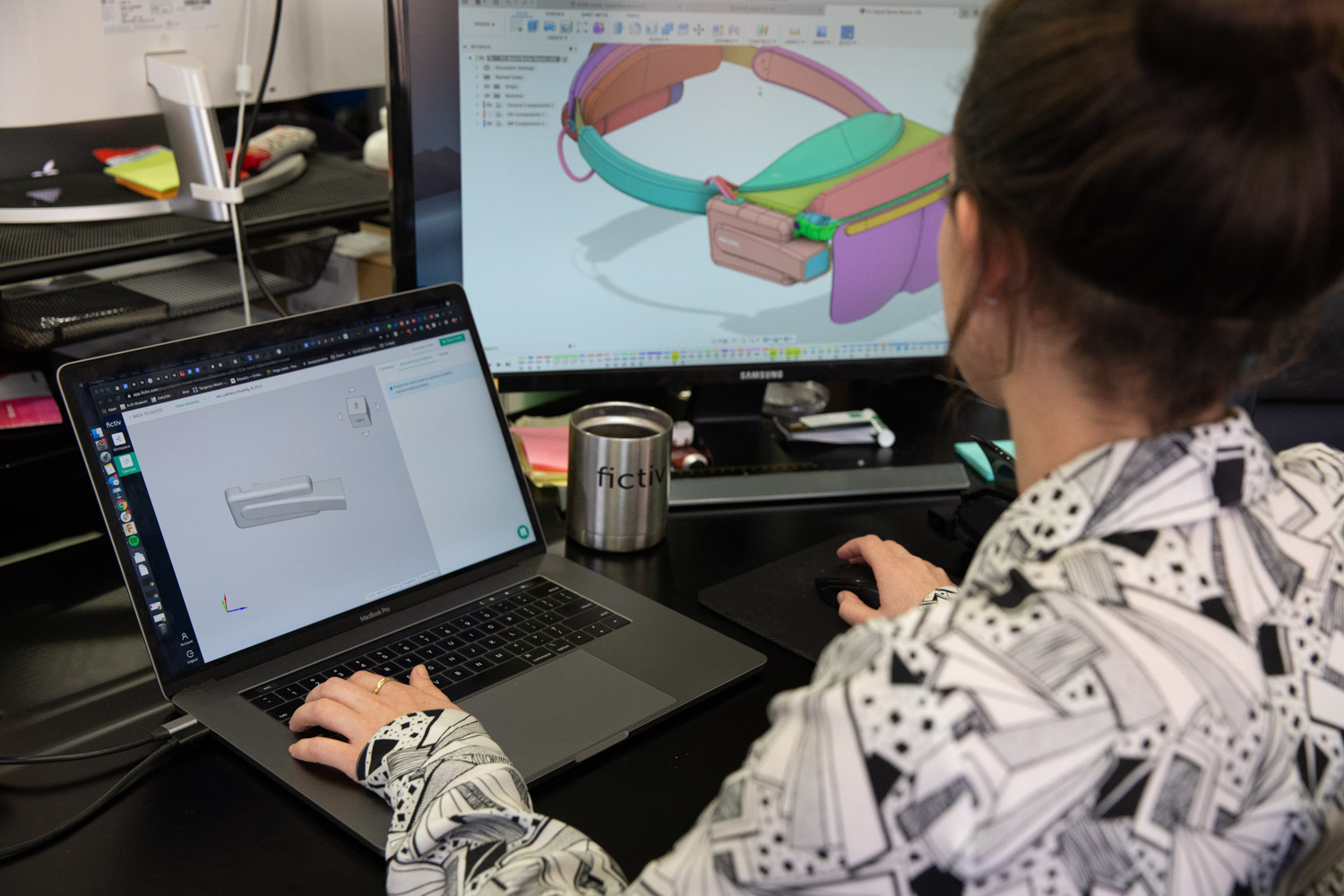How to Become an Industrial Designer

Discover the steps, education, and skills needed for success in this dynamic field
How to Become an Industrial Designer
Are you passionate about turning your creative ideas into functional and aesthetically pleasing products? If so, a career as an industrial designer might be the perfect fit for you. Industrial designers are responsible for conceptualizing, designing, and creating products that are not only visually appealing but also highly functional. In this comprehensive guide, we will explore the steps to become an industrial designer, including qualifications, degree options, and the pros and cons of this exciting profession.
What does an Industrial Designer do?
Before delving into the path to becoming an industrial designer, let's understand the role and responsibilities of this profession. Industrial designers are the creative minds behind everyday products. They work to improve the functionality, usability, and appearance of items such as consumer electronics, furniture, appliances, and even medical devices. Their goal is to blend form and function seamlessly, creating products that enhance the user experience.
As an industrial designer, you'll need to have a keen eye for aesthetics, a strong grasp of engineering principles, and excellent problem-solving skills. You'll work closely with cross-functional teams, including engineers, marketers, and manufacturers, to bring your designs to life.
Qualification Required to Become an Industrial Designer
To embark on a career as an industrial designer, you'll need a solid educational foundation. While some entry-level positions may accept candidates with an associate degree or relevant experience, a bachelor's degree in industrial design or a related field is typically required for more advanced roles.
Types of Industrial Designer
Industrial design is a diverse field, and professionals can specialize in various areas. Some common types of industrial designers include:
1. Product Designer
Product designers are perhaps the most common type of industrial designer. They specialize in creating consumer goods that we encounter in our daily lives. This can include everything from the design of smartphones, kitchen appliances, and home decor items to children's toys and sports equipment. Product designers must strike a balance between aesthetics, functionality, and user-friendliness to create products that resonate with consumers.
2. Automotive Designer
Automotive designers are responsible for shaping the future of transportation. They focus on designing the exterior and interior of vehicles, including cars, motorcycles, trucks, and even electric scooters. These designers work closely with engineers to ensure that the vehicle not only looks appealing but also meets safety and performance standards. Automotive design requires a deep understanding of aerodynamics, ergonomics, and the latest automotive technologies.
3. Furniture Designer
Furniture designers are the creative minds behind the chairs, tables, sofas, and cabinets that furnish our homes and workplaces. They are tasked with creating functional and aesthetically pleasing pieces that enhance the comfort and ambiance of interior spaces. Furniture designers work with various materials, from wood and metal to innovative composites, to craft unique and stylish furniture that caters to the needs and tastes of consumers.
4. Industrial Designer Degrees and Requirements
While not a distinct type of industrial designer, it's important to note that the qualifications and degree requirements for industrial designers are quite consistent across these various specializations. Industrial designers, regardless of their specific focus, typically earn a bachelor's degree in industrial design or a related field. This education equips them with the necessary skills and knowledge to excel in their chosen design niche.
5. Environmental Designer
Environmental designers are concerned with creating products that are environmentally sustainable. They focus on reducing waste, conserving resources, and minimizing the ecological footprint of products. This specialization is becoming increasingly important in today's world, as consumers are more conscious of environmental issues. Environmental designers often work closely with materials scientists to explore eco-friendly materials and production processes.
6. Medical Device Designer
Medical device designers play a critical role in healthcare by developing equipment and devices used in medical settings. This includes everything from diagnostic tools to prosthetics and assistive devices. These designers must consider the unique requirements of the healthcare industry, such as patient safety, sterilization, and regulatory compliance, while also striving for user-friendly and innovative designs.
7. Exhibit and Retail Designer
Exhibit and retail designers focus on creating engaging and immersive experiences for consumers. They design trade show booths, museum exhibits, retail store layouts, and interactive displays. Their goal is to capture the attention of visitors and guide them through a visually stimulating journey that tells a story or showcases products effectively. This field often requires a deep understanding of spatial design and human psychology.
Industrial design is a diverse field with numerous specializations, each offering unique challenges and creative opportunities. Aspiring industrial designers can choose a niche that aligns with their interests and passions, whether it's crafting consumer products, shaping the future of transportation, or designing sustainable solutions for a better world. Regardless of the specialization, the core principles of aesthetics, functionality, and user-centered design remain at the heart of industrial design.
How Long Does it take to Become an Industrial Designer?
The path to becoming an industrial designer can vary in length depending on your chosen educational route and career goals. Here's a general timeline:
- Bachelor's Degree: 4 years
- Internships and Portfolio Development: 1-2 years
- Entry-Level Position: Immediate post-graduation
- Advanced Positions: 5+ years of experience
Pros & Cons of Becoming an Industrial Designer
Like any profession, industrial design comes with its own set of advantages and challenges. Let's explore some of the pros and cons:
Pros:
- Creative Fulfillment: You have the opportunity to bring your innovative ideas to life.
- Diverse Projects: Industrial designers work on a wide range of products, keeping the work interesting.
- Competitive Salaries: Skilled industrial designers can earn competitive salaries.
- Global Opportunities: Design is a universal language, allowing you to work worldwide.
Cons:
- Intense Competition: The field is highly competitive, making it challenging to secure top positions.
- Long Hours: Meeting project deadlines can require long working hours.
- Constant Learning: Staying updated with evolving design software and technologies is essential.
Tips for getting a Work as an Industrial Designer
To kickstart your career as an industrial designer, consider the following tips:
- Build a Strong Portfolio: Showcase your best work to stand out to potential employers.
- Networking: Attend industry events and connect with professionals in the field.
- Stay Updated: Keep abreast of the latest design trends and technologies.
- Internships: Gain valuable experience through internships to enhance your skills.
- Be Adaptable: Embrace change and adapt to new design challenges.
In conclusion, becoming an industrial designer is an exciting journey that requires a blend of creativity, education, and determination. While the path may be challenging, the rewards of seeing your designs come to life and making a positive impact on people's lives are immeasurable.
FAQs
1. What qualifications do I need to become an industrial designer?
Typically, a bachelor's degree in industrial design or a related field is required.
2. How long does it take to become an industrial designer?
It varies, but a bachelor's degree takes approximately four years, followed by internships and entry-level positions.
3. What types of projects do industrial designers work on?
Industrial designers work on a wide range of projects that span various industries and product categories. Their primary focus is on improving the functionality, aesthetics, and user experience of products. Here are some common types of projects that industrial designers are involved in:
Consumer Electronics: Industrial designers often work on the design and development of smartphones, tablets, laptops, headphones, and other electronic devices. They aim to create sleek, user-friendly, and visually appealing gadgets that meet the demands of modern consumers.
Furniture: Furniture designers create chairs, tables, sofas, cabinets, and other pieces of furniture for residential, commercial, and hospitality settings. Their designs balance comfort, style, and functionality.
Automotive: Automotive designers are responsible for shaping the exterior and interior of vehicles, including cars, motorcycles, and trucks. They focus on aerodynamics, ergonomics, and safety while ensuring the vehicle's design is attractive and distinctive.
Medical Devices: Industrial designers collaborate with healthcare professionals to design medical devices, such as diagnostic equipment, prosthetics, and assistive devices. These designs prioritize patient comfort, ease of use, and safety.
Packaging: Designers in this category create packaging for consumer products, including food, cosmetics, and electronics. Their work involves designing containers, labels, and packaging materials that protect products and attract consumers.
Industrial Equipment: Industrial designers work on the design of machinery and equipment used in manufacturing and industrial processes. This can include anything from manufacturing robots to agricultural machinery.
Toy Design: Designers specializing in toy design create toys and games for children of all ages. Their designs promote play, learning, and safety.
Footwear: Footwear designers focus on creating comfortable and stylish shoes for various purposes, including athletic, casual, and formal wear.
Home Appliances: Designers in this category work on products like refrigerators, washing machines, ovens, and vacuum cleaners. They aim to make household tasks more efficient and user-friendly.
Exhibit and Retail Design: Industrial designers create captivating displays, exhibits, and store layouts for museums, trade shows, and retail spaces. Their designs aim to engage and guide visitors or shoppers effectively.
Environmental Sustainability: Some industrial designers specialize in sustainable design, focusing on creating eco-friendly products and solutions that minimize environmental impact. This can involve using recycled materials, reducing waste, and designing for energy efficiency.
Aerospace: Aerospace designers work on aircraft and spacecraft interiors and exteriors, emphasizing safety, comfort, and aerodynamics.
Sports Equipment: Industrial designers contribute to the design of sports equipment, including bicycles, helmets, skis, and athletic gear, aiming to enhance performance and safety.
User Interface (UI) and User Experience (UX) Design: In the digital realm, industrial designers often collaborate with UI/UX designers to create user-friendly interfaces for websites, apps, and software, ensuring a seamless and enjoyable user experience.
Outdoor Gear: This includes the design of camping equipment, hiking gear, and outdoor clothing, with a focus on durability, functionality, and comfort.
In essence, industrial designers are versatile professionals who have a hand in shaping nearly every product we interact with in our daily lives. Their work spans a wide spectrum of industries, emphasizing innovation, aesthetics, and user-centric design principles.
4. What skills are essential for an industrial designer?
Key skills include creativity, problem-solving, 3D modeling, and a keen eye for aesthetics.
5. Are there opportunities for international work as an industrial designer?
Yes, design is a global field, and skilled industrial designers can find opportunities worldwide.
- Share This Job



Write A Comment
No Comments